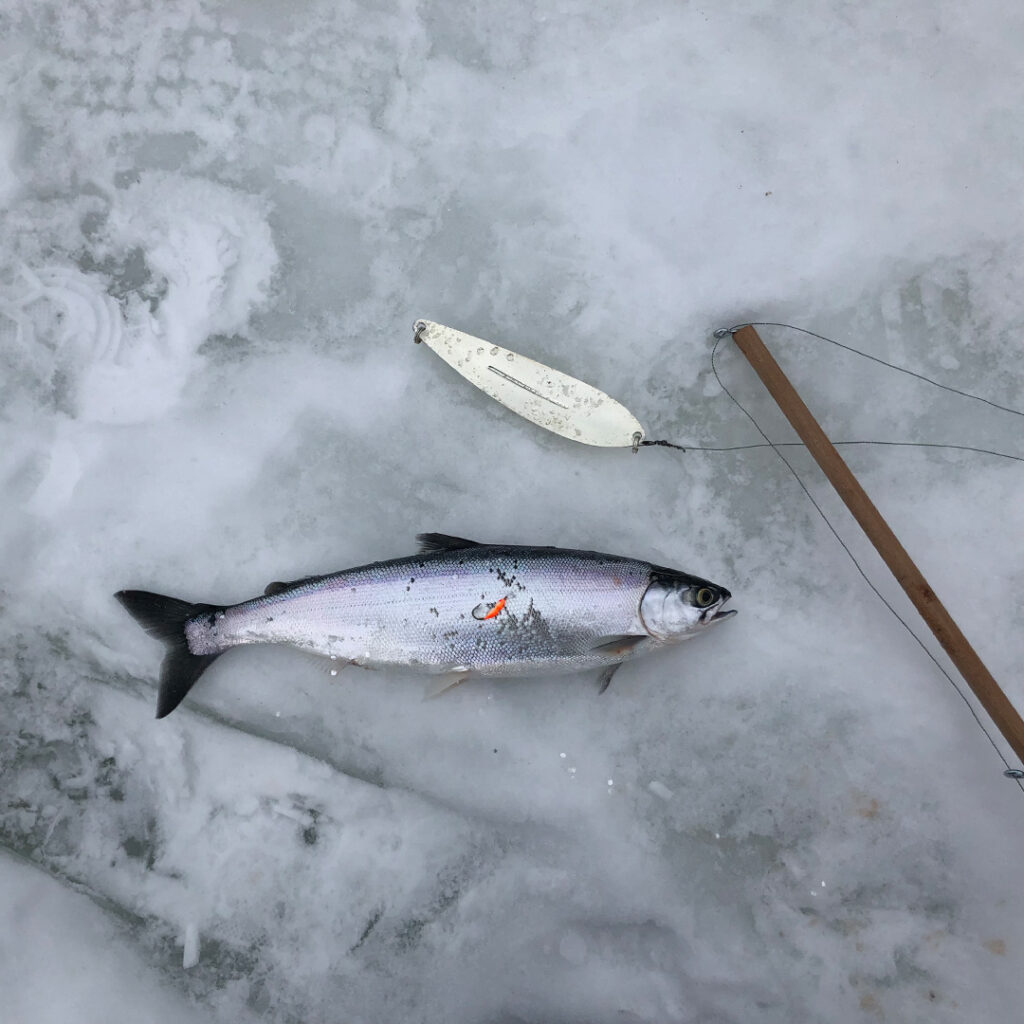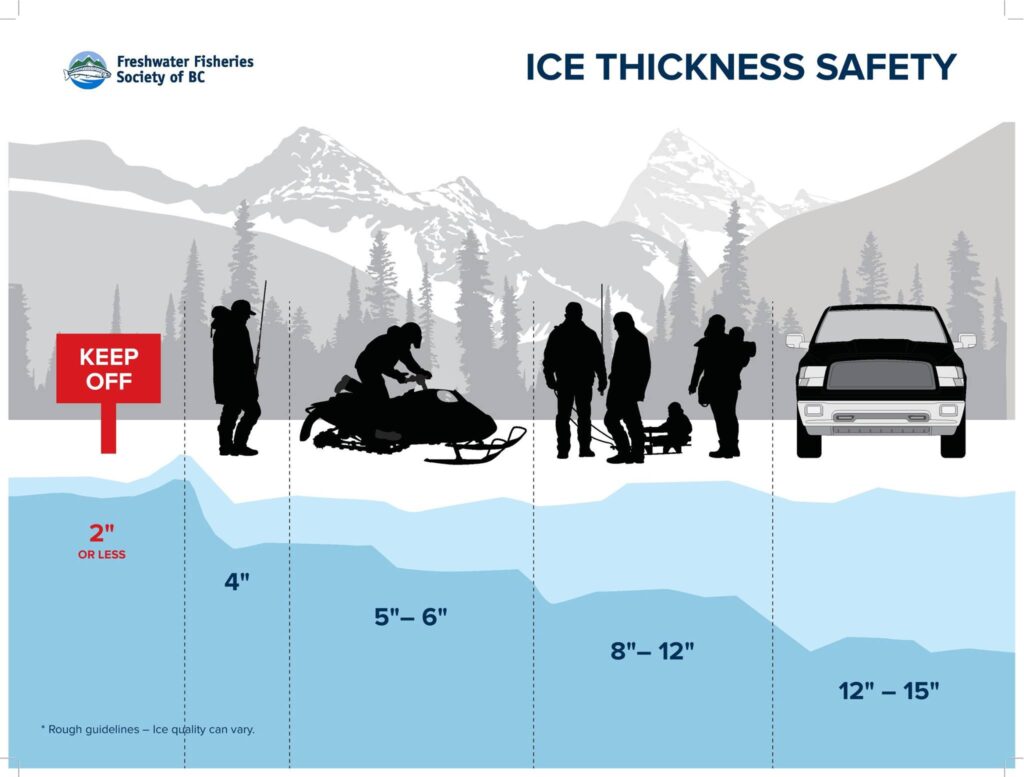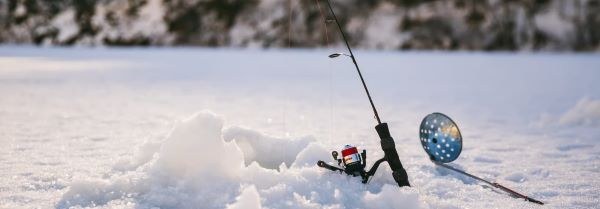Ice fishing is gaining in popularity in B.C. It doesn’t seem to matter how many people are out on the lake – there is always room for another angler during the hard-water season. Ice means that the entire lake is accessible without a boat, and the techniques can be quite simple: as easy as drilling a few holes, setting up some lawn chairs, letting down the lines, and drinking hot chocolate with family and friends while waiting for fish to bite. It’s a wonderful way to introduce anglers to this extremely social way of fishing.
If you are up for an ice fishing challenge this year, we suggest trying to fish for kokanee. Kokanee are landlocked sockeye salmon. The Freshwater Fisheries Society of BC has been busy stocking these great-tasting fish into lakes all around the province.

Here are our six tips for success when ice-fishing for kokanee.
1. Buy a fish finder. Kokanee can be anywhere from three to 25 metres (10 to 80 feet) deep in the water column, and they can be tricky to find. Luckily, kokanee tend to travel in schools, so once you have dialled in on where they are schooling, you are sure to land a few. A fish finder will show you both how deep the water is, and where the kokanee are hanging out that day.
2. Use an attractor. These fish are curious, and by using a large spoon, you can attract them into the area. Tie a heavy 7.5- to 12.5-centimetre (three- to five-inch) hookless spoon to your main line, with the large end at the bottom. Attach a small baited hook to the free end of the spoon using about a 30-centimetre (12-inch) monofilament leader.
3. Jig slowly. Yes, kokanee are curious … but they are also skittish. You will want to use slow, smooth motions when jigging for them. It is a fine line between attracting them to your area, and not scaring them away.
4. Use light gear. When ice fishing, the kokanee bites can be very light. If you even think you have a bite, set the hook! We would suggest actually holding the main line with your fingers so that you can feel even the tiniest bite, because sometimes that is all you will get from a kokanee.
5. Be safe. Make sure that the ice is at least 10 centimetres (four inches) thick if you’re fishing alone, and at least 30 centimetres (12 inches) thick before you bring out your family. If no one is out on the ice yet, throw rocks first – if they break through, then of course stay off. If rocks don’t break the ice, slowly walk out onto the surface and drill a test hole. Place a stick or your ice scoop into the hole to verify the ice thickness. Also, consider wearing a PFD, and have some retractable ice safety picks to help pulling yourself out should the ice break.
6. Don’t freeze their eyeballs and gills. Freezing temperatures can impact the survival rates of fish that are released through holes in the ice. In sub-zero weather, when water can freeze in seconds, it is important to protect a fish’s sensitive eyes and gill filaments. If possible, avoid exposing those parts to the freezing air by unhooking and releasing your fish in the water, or releasing your fish headfirst into the hole. If a fish is so big that you need to bring it out of the water in order to turn it around, or if you want to take its photo, try to keep it out of the water for as little time as possible. If you have any doubt whether the fish will survive release, plan to keep it as part of your allowable catch.

Visit the stocking reports and the freshwater fishing regulations before heading out in pursuit of these delicious landlocked sockeye. Stay warm, and good luck!
Author: Jessica Yarwood, Freshwater Fisheries Society of BC
Photo Credit: Rod Hsu, Freshwater Fisheries Society of BC Fishing Advisor
